Most masculinity advocates and feminists will agree on one salient point concerning the difference between the sexes, and will in fact agree that the biggest and most defining difference between the human sexes is physical strength. This is held as true across many sciences and by most people, which has naturally led me to suspect that it is incorrect.
Much of the theory I am presenting below is based on my experience training fighters and self-defense enthusiasts, both male and female. The other two personal sources for these observations come from:
1. A Life time of reading and writing science-fiction, fantasy and horror—works of the imagination.
2. 34 years working in the 60% female 40% male, male-dominated, retail food business, with four years of that time spent as the general manger and assistant to the female CEO and female CFO [sisters] of a 110 employee operation, which it was my duty to develop, counsel and discipline on behalf of the ownership.
Strength
The observation that men are physically stronger than women is of course true, and is so obvious that women, and emasculated men, will naturally conclude that brute physical strength is the key defining difference between the genders. Masculinity advocates will point out that men and women possess psychological make ups based on this difference, which is the very real fact that men are designed to rape women, and that this fact should be kept in mind when rearranging the social setting—an observation I very much agree with, but which does not go nearly far enough in defining the male female difference.
The view of man as strong, first and foremost stems from the feminine viewpoint, and also the civilized view of life surrounded by other humans with few interactions with other species. For agricultural man brute strength is important for tilling the earth, being yoked to a plough along with his beasts, for hauling goods, etc. The agricultural woman is relegated to lighter repetitive tasks like grinding and threshing.
Our feminist will naturally wish to play up the difference in strength as being key to the human condition so that she might be free to sweep aside the naturally cruel order of strength-based brutality in favor of some form of social engineering that favors the feminine strengths of social compliance, group connectivity, nesting, etc.
Primal Man and Woman
In an uncharted wilderness, working together is where man and woman developed psychologically. In the civilized setting both genders have suffered so much pain and emotional dislocation that recourse to intoxicants has been rampant since the Sumerians sung of a “happy liver” drinking beer out of clay vats with straws 5,000 years ago.
First of all, if what defines man from woman is strength, what defines man from the beasts? Certainly not superior strength.
More importantly, what defines modern Homo Sapiens Sapiens from Chimps, Orangutans, Gorillas, and all forms of proto-humans, most notably the ones we most recently slaughtered, the Neanderthals?
That is correct, lack of robust physicality, or strength. We are the weakest of the great apes, and the most murderous by far. We have nearly slain a world.
Man did not rise by strength of hand. He rose by strength of mind, surrendering his brute power of the ape for the mind of a creator race.
Currently the most intelligent person on earth is a woman—married the guy that invented the mechanical heart. Note, that he invented it, not her smart ass.
Let us return to the role of the primitive woman. It would shock—and did shock many early European explorers—to find out that primitive women are stronger than civilized men, and often able to haul more weight than their own men. Of course this is their job, hauling goods. The woman is the pack animal of the pre-agricultural world, an astonishingly strong little creature, who were often equal to their men when it came to lifting and hauling.
Of course killers don’t lift—they kill, with their mind first and whatever is required to achieve it second.
Man was the killer.
Woman was the gatherer.
Women have always excelled at social reinforcement and forging cooperative bonded networks on a small scale. They have also excelled at repetitive sorting tasks, gardening and other such activities that incorporate the gathering complex, which includes chattering [alerting others to food] and screaming [alerting the men to danger]. A woman’s primary tasks were hauling, gathering and nurturing. The gathering aspect was the most adventurous and risky, yet dealt with known quantities primarily. Once someone dies from eating that new red berry it must forever be stricken from the menu. Conservatism is thus a natural feminine quality.
The man’s chief functions were exploration, hunting and defense. The civilized person—since he is born and raised as a woman—will think that defense is the most important and it is not, indeed was the least engaged in by primitive men, who primarily used exploration as a way to avoid conflict for most of our pre-history, which is to say most of human existence. Even the savage German tribes who took down the Roman Empire were victims of displacement who attacked civilized Rome rather than face the Huns on their own.
The displacement of language groups among Native Americans tells a thousand brutal tales of men leading their people away from encroaching enemies rather than set up secure perimeters as do civilized folk.
Just as the primal woman spends most of her life gathering and hauling rather than child rearing, the primal man spends most of his life exploring and hunting rather than defending. Note that even the most dominant men behave subserviently in a food market or when shopping. This is natural, he is differing to her specialty, gathering.
Our civilized reading of the primitive condition is inherently corrupt, false and skewed toward the feminine perspective.
General Custer’s bitch of a wife spilled plenty of ink complaining about how weak Indian men were compared to a hard working plough-pushing white farmer, and how strong the women were. Well, those plough-honed muscles of the domesticated white man did not help him much at Little Big Horn as the more imaginative enemy butchered him like so much cattle. [The fact was many of Custer’s men were out of work laborers, some new to horses and weapons altogether, and a few already injured from workplace accidents. One guy could not even get his coat o unassisted when they headed out on patrol.]
The primary function of primitive man is exploration and hunting, which calls for a deep well of imaginative potential—how will this Bison act?
If it does this what do I do?
If he does that what should I do?
If this idiot on my right steps on a dry twig again do I spear him or chase the Bison?
On the other hand, the woman needs to manage known quantities of goods, predicable berry, root and nut harvests. With the addition of carrying goods, which is really an adaptation of carrying young and nesting, the woman lives in the same manner as the monkey, chattering, nesting, foraging close to home, close to others, in constant voice communication.
The man must be able to imagine as yet unknown terrain, weather, creatures, behaviors, enemies, etc., and be able to silently make plans with other men for the successful exploitation of the opportunities and defeat of the perils posed by all of these quantities. He must be able to look across a limitless body of water or desert and imagine a place sustainable of life on the other side, or he never gets out of Africa in the first place.
Primitive man and woman depended on each other and worked as a set of complimentary teams. A fair example would be a sporting venue, with the athletes behaving in the male role, the staff at the facility filling the female support role, and the spectators representing the uncaring gods, animal powers and sympathetic ancestors [retired athletes] of the primal metaphysical realm.
Work Stress
In a retail food environment women are generally better at the labor end and men generally better at dealing with the dizzying array of personalities among the customers and staff. Women do not make it in management for two reasons: lack of mental flexibility [imagination] and lack of emotional stability under stress. When something insane happens women make it worse with their chatter and those men with the wits to act and say the minimum, sort it out.
Combat
In combat training women make quicker studies when it comes to picking up training patterns and transmitting knowledge, serving as excellent assistant coaches. On the other hand, women lack killer instinct largely because they lack the ability to imagine themselves hitting, getting hit, winning, losing, etc., and tend to get swept away emotionally in the moment. Their pain tolerance is usually poor as they lack the ability to lie to themselves, which requires a deep imaginative capacity. Many emasculated men suffer from these same problems. But the guys who make it to that lethal place in the ring do so almost exclusively on mental powers. Every champion fighter knows men who are stronger than him, has beaten men who are stronger than him physically, but he is the strongest mentally.
Literature
For the most part female readers lack the ability to follow a story without obvious lineal plot structure and get caught up on form and vocabulary, failing to find inferences.
While working with two female novelists they were under much stress and used much artifice to present scenes of physical combat, literally mapping out the activities like the director of a film or play would for the actors, where I just ripped off fight scenes without a deliberate thought. Combat is easy for me to imagine and hard for them to imagine, and this is not because of my fight experience. I’ve been able to imagine vivid combat scenes since earliest childhood. As a boy I had a dream that I was eaten by a polar bear. This bothered me. Every night before I went to sleep I envisioned alternative actions I or the bear might take and what might happen, in my quest to imagine a solution to the bear in my mind.
In terms of literature the most glaring example of the difference between male and female authors is two horror authors, Robert E. Howard, a young man with good vocabulary and some flaws in his writings style, who would have benefitted from an English tutor such as middle aged novelist Anne Rice, who, by every technical measure was a more mature and polished writer than the much younger Howard was when he wrote his horror.
In Rice’s fiction her protagonists are primarily male, who, while well wrought, are consciously gay men. She must have watched gay porn to arrive at her understanding of men. Indeed, all modern vampire characters have a strong gay edge and are very emasculated, in contrast to the original Bram Stoker’s hyper-masculine vampire.
On the other hand, Howard, a man who may have never had sex, who only sold a single novel and that in the United Kingdom, crafted male characters that are among the most masculine ever conceived, and still managed to depict normal range males and every range of female from Valeria, Cutthroat Cock-Blocker of the Red Brotherhood, to Murelia the ditzy slave girly girl, and every nuance of vested female co-protagonist in between.
Conclusion
It is no accident that men have invented almost everything, discovered every place, uncovered almost every law of nature, founded virtually every religion—even of goddesses!
If you went back 20,000 in years time and flexed your bicep and tried telling a hunter that being strong made you a man, and that having bigger muscles made you more of a man than him, he’d assign you to carry his wife’s tent poles, tell her to make a useful woman out of you and shake his head.
In Jack Donovan's seminal work he lays out four male characteristics: Strength, Courage, Honor and Mastery. The reader could take this as a case of rough proportion, or as strength and Courage serving as a foundation for the higher values. In either interpretation a man is a lot more than his body.
An excellent example of the female and male perspective on the same subject is given below in the form of these two videos.
Marc Aramini on Gene Wolfe and Literature, Part 1
The Shadow Of The Torturer (book review) by Gene Wolfe
The bimbo reviewer here reads the deep layered metaphor as flowery language obscuring a explanatory plot as opposed to a many-branched corridor of the mind’s eye opening upon differing views of the truth. The need to titillate and crudely satisfy, and speak in the simplest terms, and to not use obscure terms or oblique exposition, in order for the female reader to be able to keep up in her mind, prevents deep horror or science-fiction reading by women. So, please view this review by this witless doll as a window upon the female’s mind. The female reader needs to know more than the characters. The fact that female and emasculated readers need such a well-ordered lineal storyline, understood from a god-perspective, describes why modern storytelling requires the godlike super hero as a protagonist.
The more intelligent the female reader is the more trouble she will have with Wolfe and other oblique expositions as it seems like masturbatory writing to an intelligent woman. I have encouraged three highly intelligent women to read Wolfe and got the same response from each of them.
When she says “doesn’t make much sense but sounds pretty,” she is simply exposing the lack of imagination implicit in the female condition.
That said, I think this young lady is a doll, and if I was still a young man I would regard it as my sacred duty to keep her with child for the next twenty years—and I think Genghis, Attila, Vlad and Tamerlane would concur.


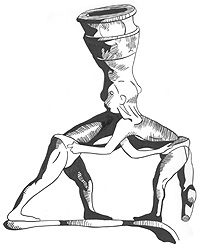
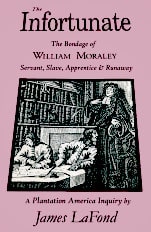



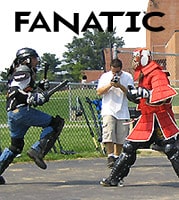
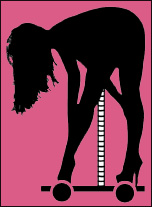
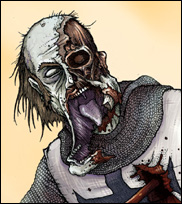

Robert E. Howard very likely lost his virginity as early as 1928 in a Mexican brothel-town (often called a "boys' town" in TX to this day):
rehtwogunraconteur.com/the-missing-mexico-trip
There were also brothels in several towns near Cross Plains. You see a shift in Howard's poetry and prose around 1930 that would indicate he'd assimilated new data in the feminine direction.
Ann Rice discovered REH and Edgar Rice Burroughs a few years ago. She fell in love with their work. Posted all about it on Facebook.
Thanks so much for this information.
I feel better about Howard now.
The brothels would explain a few of those "insolent' wenches.
For the record, I really liked Interview with a Vampire, Blood and Gold and Lestat.